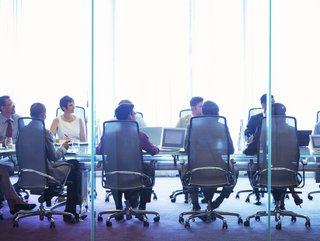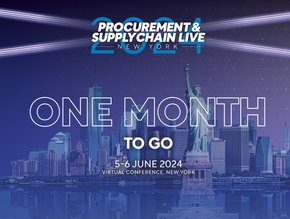Supply chain 'at centre of C-suite thinking' - Blue Yonder

Tell us a little about your career
I’m an enterprise software industry veteran, having served in senior executive roles at companies that include Retek, Oracle and Infor. I have over 30 years of tech experience leading teams and working across every part of the supply chain and retail.
Interestingly, there’s a closed-loop poetry to how my whole professional life has intersected with Blue Yonder; one of the first projects I ever worked on was with Andersen Consulting (now Accenture) to implement RedPrairie WMS at Selfridges, and that company is now part of Blue Yonder. After that, I was at Retek, a main JDA competitor, which I took public.
I have always had a product-led mindset, coming up through engineering. I’m bringing this mindset to Blue Yonder and hope that this will elevate our customer-centric approach. Speed and intensity are the name of the game. The supply chain moves fast. We should too.
Where do boardrooms stand on supply chain?
Supply chain has never been more mission critical. We are the heartbeat of our customers’ business. It’s playing out on a global scale now, whether it's geopolitics driving reshored manufacturing, e-commerce changing the way people serve customers, or questions around the sustainability of the supply chain lifecycle. We’re really experiencing a zeitgeist.
To get ahead, organisations must focus on a purpose-driven narrative, which makes the supply chain more efficient, sustainable, and customer-centric. I believe that these are the main considerations being discussed in board rooms right now.
How can retailers best navigate supply disruption?
Societal pressures and demand for purpose-driven business have never been clearer; delivering needed food, health care and supplies during a time of great disruption has been the stuff of headlines over the last two years.
This is where Blue Yonder has the edge; working with customers to realise the power of self-learning and growth. Our commerce business, from planning, and WMS, to transport management, has all been differentiated through elegant microservices architecture, so customers don’t have to rip and replace the whole OMS.
The ability to leverage common components within existing business architecture will be critical for retailers looking to navigate further supply chain disruption. Using what you have and building around or on top of these systems provides added flexibility which not all SaaS providers can create.
What’s the long-term future of supply chain?
Throughout our history, commerce and trade has enabled the spread of ideas and the growth of civilisations. Technology and innovation have always played a core part in shaping and amplifying the benefits of commerce and trade.
The next decade of the supply chain will be marked by accelerated growth, even more so than the previous 30 years. Supply chain has become central to every business globally and is the backbone of superior customer service.
The evolution of software, edge technologies, automation, 5G, and cloud computing will reshape our experience with brands, products, and services. Consumption will change, and with it, so will the supply chain. It will become more personalised and meaningful – ultimately holding the ability to drive huge societal impact and create a more sustainable world.
How will tech create more-sustainable supply chains?
I believe in the power of disruption and its role as a catalyst for digital transformation.
Alongside technological evolution, massive societal and economic shifts – some of which we’re already seeing – will continue to create new opportunities for businesses of all sizes. While we can't predict exactly where we might be in the next decade, we know that technology will continue to accelerate change exponentially.
If we look at digital transformation, for example, what was expected to take place over the course of 10 years, took place in two, driven by the need created by COVID-19 lockdowns and shift to remote work and operations.
Best advice ever received?
Someone once told me that “supply chain collaboration is only a query away”. I love this because it highlights the revolutionary mindset shift needed for anyone working across the supply chain.
Change is rapid, dependent on the wider network, and can be driven by the smallest thing at a click of a mouse. This makes the supply chain an extremely exciting space to be in.
- Technology Investments are Helping to Fortify Supply ChainsTechnology
- CT47: The Multi-Purpose Mobile Computer for the Supply ChainTechnology
- How to Boost Supply Chain Visibility with Tive and ArvatoSupply Chain Risk Management
- Hyve Co-Founder on Cloud's Potential to Transform LogisticsLogistics






